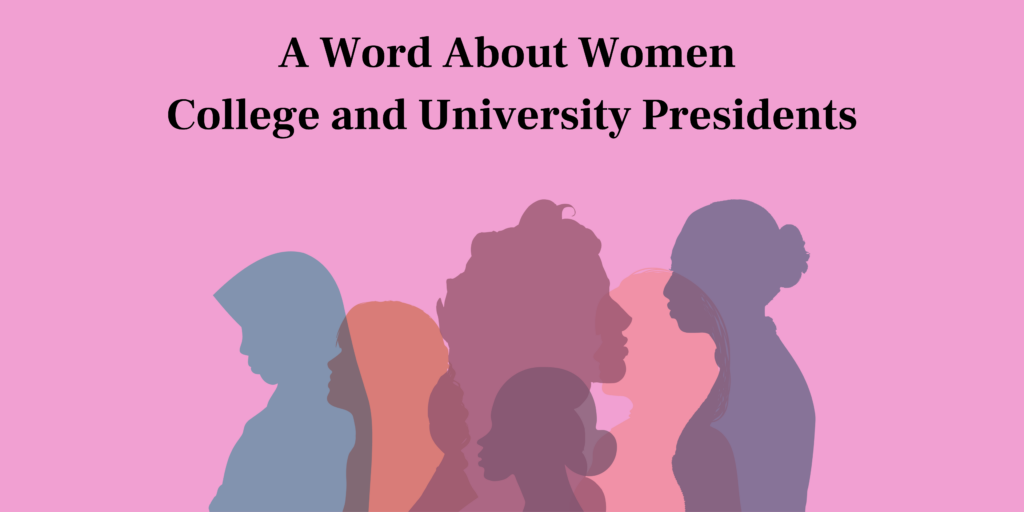A Word About Women College and University Presidents

As we close out Women’s History Month and its many celebrations of how far we have come, we must also recognize how far we still have to go. In 1837, Mary Lyon founded what later became Mount Holyoke College, the first of the historically women’s colleges known as the Seven Sisters. In 1903, Mary McLeod Bethune, a Black woman, was appointed president of Bethune Institute, which became Bethune-Cookman College in 1904. Fast forward to 1986, when Julia Garcia was appointed the first Latina college president at Texas Southmost College. Most recently, in January 2023, Columbia University announced Nemat Shafik as its next president; she will become the first woman to lead that Ivy League institution in its nearly 270-year history, marking an era in which six of the eight Ivy League institutions will have women at the helm.
Unfortunately, the Ivy League remains an outlier among the nation’s top institutions. A recent study examining 130 of the country’s top research institutions found that just 22 percent had female presidents, only five percent of whom were women of color, and nearly half had never had a female president. The study also revealed that gender disparities persist all along the academic career ladder yet are by far the most acute at the highest levels: A difference of 20 percentage points between men and women who hold dean and provost positions (60 and 40 percent, respectively) almost triples to a 56 percentage point gap between men and women presidents.
Higher education has much more work to do to achieve any level close to gender parity among its leaders. Women now account for nearly 60 percent of U.S. college students and have outnumbered male students for nearly 45 years. But college presidents remain overwhelmingly male. Approximately three in ten institutions are led by women today; the American Council on Education reports that the percentage has remained flat since 1986.
In the college president search process, rife with bias, women face many barriers. Colgate University researchers found, for instance, that institutions may be limiting the pool of women applicants to those in primarily academic roles, despite being more open to men applicants from a variety of senior positions. Men who become president may have served in many kinds of roles both within and outside higher education; the few women who become president generally come from a small number of specific academic roles. Moreover, presidential searches favoring those with academic backgrounds tend to look at candidates who have served as provosts, academic deans, and other positions that are mostly occupied by men. The result: searches cast a far wider net for male applicants—and with fewer hurdles— than for female applicants.
Having more female college presidents is not merely a symbolic step. At colleges and universities with women presidents, female senior faculty and top administrators earn more money than those working at institutions run by men, according to the College and University Professional Association for Human Resources. Institutions with female presidents also have higher percentages of women working in all major administrative categories, including senior institutional officers, institutional administrators, and division heads.
While college and university leadership has struggled to keep pace with an increasingly diverse student body, having women at the helm of institutions of higher education can foster greater inclusion that inspires the next generation of female leaders. It is past time that the presidents leading higher education more accurately reflect those whom they serve. Which female Cooke Scholars, perhaps women of color, might be future college or university presidents?